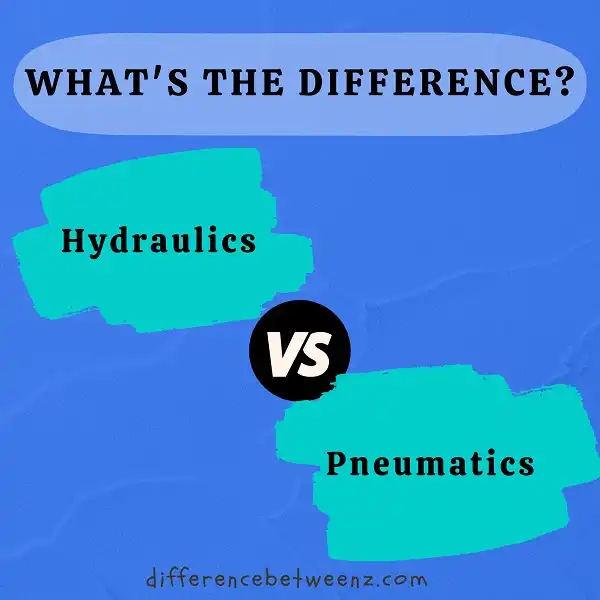Hydraulics and pneumatics are both common methods of transmitting power. However, there are some key differences between the two systems. In this blog post, we will explore the difference between hydraulics and pneumatics, and discuss which system might be best for your application.
What is Hydraulics?
Hydraulics is a branch of fluid power that uses pressurized liquids to generate mechanical motion. Hydraulic devices convert the energy of flowing fluids into mechanical energy, which can be used to operate everything from small Hydraulic equipment that is used in manufacturing and construction to massive Hydraulic systems that are used in ships and aircraft. The Hydraulic principle can be traced back to ancient times when people used water wheels and Hydraulic pumps to irrigate crops and operate mills. Today, Hydraulics is an essential part of many industries, from automotive and aerospace to food and beverage processing. Hydraulic components are found in a wide variety of everyday products, from car brakes and power steering to garbage disposals and escalators. Hydraulic systems are also used in a variety of specialized applications, such as lifting heavy loads, controlling aircraft flaps and stabilizers, and operating mining machinery.
What is Pneumatics?
Pneumatics is a branch of engineering that deals with the study and application of pressurized gases. Pneumatic systems are used in a variety of industries, including automotive, aerospace, and manufacturing. Pneumatics can be used to power tools, actuate valves, and control robotic arms. Pneumatic systems are often preferred over hydraulic systems due to their lower cost and maintenance requirements. Pneumatics can also be used in hazardous environments where flammable liquids are present.
Difference between Hydraulics and Pneumatics
Hydraulics and pneumatics are two types of fluid power. Hydraulic power is transmitted using a liquid, such as oil or water, while pneumatic power is transmitted using a gas, such as air or nitrogen. Hydraulic systems are typically used for tasks that require large amounts of force, such as lifting heavy objects or operating construction equipment. Pneumatic systems are often used for tasks that require precise control, such as controlling the movement of robotic arms. Hydraulic and pneumatic systems both have their advantages and disadvantages. Hydraulic systems are usually more powerful, but they can be less efficient and may require more maintenance than pneumatic systems. Pneumatic systems are often lighter and more compact than hydraulic systems, but they may not be able to generate as much force. Ultimately, the choice between hydraulics and pneumatics depends on the specific needs of the application.
Conclusion
Hydraulics and pneumatics are two types of systems used to create power. Both have their own unique benefits, which is why they are often used in conjunction with one another. If you’re looking for a system that can provide both power and precision, then you should consider using hydraulics and pneumatics together.


